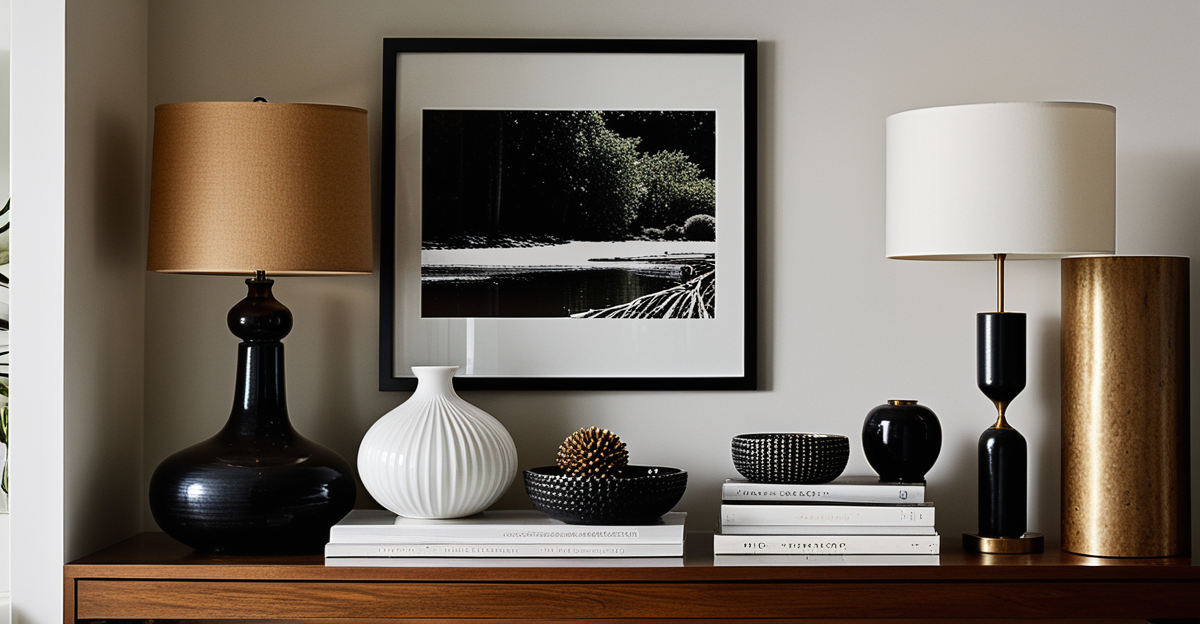How Home Decor Reflects Personal Identity
Home decor psychology reveals a strong connection between the environments we create and our very sense of self. Interiors often act as a canvas for self-expression, allowing personality to manifest through choices like furniture, color schemes, and decorative objects. This reflection is not coincidental; psychological theories suggest our surroundings influence and mirror our personal identity in tangible ways.
Research in home decor psychology shows that people unconsciously select design elements that resonate with their emotional needs and core traits. For example, someone drawn to clean, minimalist layouts may value order and clarity, while a preference for eclectic, bohemian styles might indicate openness and creativity. This alignment provides comforting familiarity and reinforces self-perception through daily interactions with one’s space.
In the same genre : Why Should You Invest in Quality Furniture for Your Home?
Common signs that decor mirrors personality traits include repetition of preferred color palettes, choice of textures, and themed accessories that evoke memories or aspirations. When personality through decor is closely observed, distinct patterns emerge—those who favor bright, warm colors often seek energy and optimism, whereas cooler, muted tones may suggest introspection or calm. Identity in interior design, therefore, acts as both a mirror and a mode of communication about who we are and what we cherish.
Common Decor Styles and Associated Personality Traits
Home decor psychology demonstrates that decor style personality often reflects deeper aspects of identity in interior design. A person’s choice of interior design styles can serve as a clear window into their inherent preferences and values. For instance, minimalist styles usually attract individuals who appreciate simplicity, order, and calmness, as these designs emphasize uncluttered spaces with clean lines. This preference aligns with personality types that favor control and clarity in their environment.
This might interest you : Why Should You Invest in Quality Furniture for Your Home?
In contrast, bohemian styles are favored by those who embrace creativity, freedom, and eclecticism. The layers of rich textures, vibrant colors, and mixed patterns mirror personalities that value expression and openness. Individuals drawn to traditional decor often seek comfort and stability, highlighting a personality type that values heritage and timelessness.
Psychological theories suggest that these choices are not random; rather, they are expressions of self that provide emotional resonance and identity validation. Real-life examples include an artist whose home often bursts with colorful art and unique decor bits, clearly embodying bohemian traits. Conversely, a professional with a sleek, streamlined office echoes minimalist traits that support focus and efficiency. Such congruence between personality types and home decor psychology underlines the intimate connection where personality through decor reveals the essence of the inhabitant.
The Impact of Color and Patterns on Mood and Self-Perception
Color psychology reveals that hues significantly influence our emotional responses and shape how we perceive ourselves within a space. For example, warm colors like red and orange often evoke energy and enthusiasm, suggesting a personality that craves stimulation and social connection. In contrast, cooler colors such as blues and greens tend to promote calmness and introspection, signaling traits like tranquility and thoughtfulness. This connection between personality and color choice helps explain why individuals gravitate toward particular palettes that support their emotional needs and identity in interior design.
Patterns and textures in home decor also play a critical role in communicating individuality. Repetitive geometric patterns can indicate a preference for order and structure, aligning with personality types who value predictability and clarity. Organic, asymmetrical patterns usually appeal to those who embrace creativity and spontaneity, reflecting a more free-spirited identity through decor. The meaning in decor patterns emerges as an expressive language, where combinations of shapes and fabric textures become personal signatures within a living space.
Moreover, the interaction between color and pattern amplifies their impact on mood. A vibrant floral print against a muted background might demonstrate a balance between extroversion and calmness, showing a nuanced blend of personality traits through decor. Recognizing these subtle signs in home decor psychology allows individuals to consciously select colors and patterns that enhance self-expression and promote emotional well-being.
Accessories, Art, and Personal Touches as Signature Statements
Home decor psychology emphasizes the power of home accessories personality as vital tools for self-expression. Accessories—not just decorative but thoughtfully curated objects—act as tangible extensions of identity in interior design. These personal touches reveal passions, experiences, and values that broader styles might not fully convey. For example, a collection of travel souvenirs on shelves can signal curiosity and a love for adventure, making personality through decor uniquely vivid.
Selecting art and decor items based on personal taste further enhances this expression. Art taste and identity deeply intertwine; an individual’s choice of paintings, sculptures, or photographs often reflects their emotions, beliefs, or cultural affiliations. This connection helps transform a space from merely aesthetic to meaningfully inhabited. Displaying art that resonates personally fosters deeper emotional attachment to the environment and supports emotional well-being.
Homeowners also use personal decor items to tell stories. These meaningful objects—whether heirlooms, DIY crafts, or gifts—imbue interiors with narratives that friends and family can connect to, reinforcing identity in interior design beyond surface appearances. The psychological impact is significant: living among items conveying personal history and significance fosters comfort and a sense of belonging.
In summary, accessories, art, and personal items act as a signature statement within home decor psychology. Their thoughtful integration helps individuals craft a home that genuinely represents their personality and values, strengthening the bond between living space and self.
Expert Insights: Psychology and Interior Design
Interior psychology experts consistently emphasize the deep connection between environment and mental well-being. Their research shows that personality through decor is more than aesthetic preference; it actively shapes mood and cognitive function. Experts highlight that a home reflecting genuine identity can reduce stress and enhance overall happiness by providing a space that resonates with one’s emotional and psychological needs.
Professionals in the field of interior psychology assert that tailoring interiors to personality supports mental clarity and emotional balance. For example, interior psychologists recommend incorporating elements that align with an individual’s core traits—such as calming hues for introspective types or bold accents for extroverts—to foster a sense of harmony. This expert advice underlines how identity in interior design plays a crucial role in daily mental well-being.
Interior designers also approach projects by carefully assessing client personalities to create spaces that feel authentically personal. They use psychological insights to translate personality traits into functional and aesthetic design choices, ensuring that the home environment supports both the individual’s lifestyle and emotional resilience. These professionals often advise practical yet meaningful modifications that help clients achieve a cohesive expression of self through decor.
Research-backed tips from psychologists and designers include:
- Prioritizing comfort and functionality to reduce mental clutter
- Using color psychology deliberately to enhance mood and productivity
- Incorporating personal, meaningful accessories that strengthen emotional connection
- Balancing familiarity with novelty to keep spaces stimulating and reassuring
By integrating expert knowledge, homeowners can make informed decisions that not only reflect their personality but also promote psychological well-being, demonstrating the undeniable impact of home decor psychology on everyday life.
Practical Steps to Align Home Decor with Your Personality
Aligning your living space with your true self begins with understanding how to personalise home decor effectively. Start by identifying core elements of your personality that you want to express—whether it’s a love for vibrant energy, calm minimalism, or eclectic creativity. Focusing on these traits helps in making intentional choices, transforming your space into a genuine reflection of who you are.
A practical approach involves assessing your favorite colors, textures, and styles, then integrating them thoughtfully. For example, if you enjoy both traditional and modern elements, mixing these interior design styles can create a balanced yet individualized environment. The key is to maintain coherence by selecting complementary features instead of overwhelming contrasts. This method allows for a unique expression of personality while preserving harmony in the design.
Several practical decorating tips can guide this process:
- Begin with a base palette that aligns with your mood and personality, then add accent pieces to introduce variety
- Incorporate personal items that hold emotional significance to deepen the connection with your decor
- Experiment with patterns and textures that resonate with your identity, enhancing the tactile experience of your space
Using tools such as personality quizzes or online style guides designed around aligning decor with self can clarify preferences and inspire creativity. These resources often prompt reflection on how your choices in furniture, color, and accessories communicate your individuality. By combining self-awareness with expert recommendations, you optimize the impact of your home decor psychology, ensuring every element supports your emotional and aesthetic needs.
Ultimately, these steps not only enhance the visual appeal but also foster a sense of belonging and satisfaction. Personalizing decor becomes an empowering act, strengthening the bond between your identity and your living environment.





